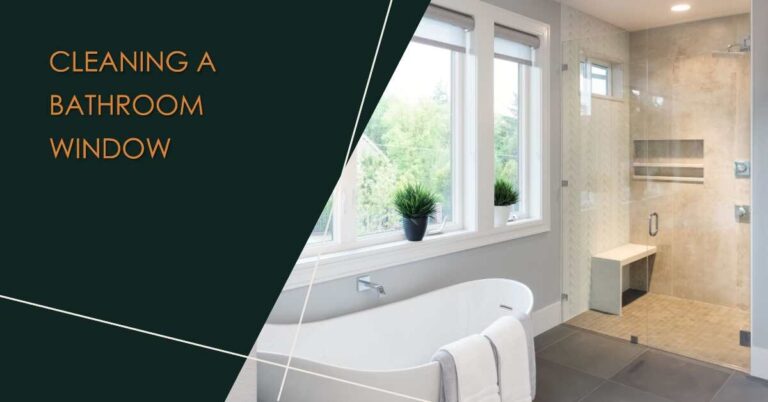Plumbing is essential to any modern bathroom, delivering clean water for various purposes and efficiently removing wastewater. Understanding how bathroom plumbing works is not only beneficial for homeowners but also for anyone interested in the mechanics behind this vital system.
This article aims to provide a comprehensive overview of bathroom plumbing systems, covering everything from the water supply and drainage system to the role of fixtures, pipes, and common troubleshooting issues.
By delving into the intricacies of bathroom plumbing, readers will gain valuable insights into maintaining a functional and efficient plumbing system in their homes.
- Introduction to Bathroom Plumbing Systems
- Understanding the Water Supply and Drainage System
- Exploring Bathroom Fixtures and Their Functionality
- The Role of Pipes and Plumbing Connections in the Bathroom
- Common Issues and Troubleshooting in Bathroom Plumbing
- Maintenance Tips for a Healthy Bathroom Plumbing System
- Upgrading and Improving Bathroom Plumbing Efficiency
- Key Considerations for Effective Bathroom Plumbing
- Conclusion
- FAQ
- Resources
Introduction to Bathroom Plumbing Systems
The Importance of Understanding Bathroom Plumbing
Ah, the bathroom. It’s a place of solitude, tranquility, and enlightenment. But have you ever stopped to think about what goes on behind the scenes? Understanding your bathroom plumbing can save you from potential disasters and keep everything running smoothly (pun intended).
Overview of the Basic Components
Let’s start with the basics, shall we? Your bathroom plumbing system consists of several key components: the water supply system, the drainage system, and the venting system. These work together to bring water in and remove waste, ensuring your bathroom functions properly.
Understanding the Water Supply and Drainage System
The Water Supply System
Water, the elixir of life, is an essential part of any bathroom. The water supply system delivers fresh water to your sink, toilet, and shower.
This system includes pipes, valves, and faucets. So, thank your water supply system the next time you turn on the faucet and water magically appears.
The Drainage System
Now, let’s talk about the drainage system. When you flush the toilet or wash your hands, that water needs to go somewhere, right? That’s where the drainage system comes in.
It comprises pipes carrying wastewater from your bathroom into the sewer or septic tank. It’s a dirty job, but someone must do it.
The Venting System
Wait, we’re not done yet! We still need to talk about the venting system. No, we’re not talking about the fancy air freshener you have in your bathroom.
The venting system ensures that air can escape from your drainage system, preventing unpleasant odors and allowing everything to flow smoothly. Think of it as your bathroom’s very own exhale.
Exploring Bathroom Fixtures and Their Functionality
Sink and Faucet
Now that we’ve covered your bathroom’s inner workings, let’s focus on the stars of the show: the fixtures. The sink and faucet are the workhorses of your bathroom.
They provide a convenient place to wash your hands, brush your teeth, and perform other bathroom-related activities. So next time you admire your reflection in the mirror, give a little nod of appreciation to your trusty sink and faucet.
Toilet
Ah, the throne. The porcelain goddess. The commode. Whatever you call it, the toilet is an essential fixture in any bathroom. It’s a modern marvel that takes care of your business with a simple lever push. Just give it a little love and respect, and it’ll do its duty (pun intended) flawlessly.
Bathtub and Shower
Last but not least, we have the bathtub and shower. These fixtures provide a little slice of relaxation and rejuvenation in your bathroom. Whether you prefer a long soak in the tub or a quick refreshing shower, these fixtures wash away your worries and refresh you. Just remember to bring your rubber ducky.
The Role of Pipes and Plumbing Connections in the Bathroom
Types of Pipes Used in Bathroom Plumbing
Ah, pipes. The unsung heroes of your bathroom plumbing system. Various types of pipes are used, including copper, PVC, and PEX. Each has its strengths and weaknesses, but they all work together to keep water flowing and waste going where it should. So let’s give a round of applause to these silent saviors.
Understanding Plumbing Connections
Plumbing connections may not be the most glamorous aspect of your bathroom, but they are crucial in keeping everything connected (literally).
These connections, from joints to valves to traps, ensure that water flows in the right direction and that leaks and clogs are kept at bay. So let’s raise a plunger to these unsung heroes of plumbing.
Importance of Proper Pipe Sizing and Slope
Oh, pipe sizing and slope, the dynamic duo of bathroom plumbing. Proper sizing ensures water flows smoothly through your pipes, while slope ensures that waste is carried away efficiently.
It’s all about finding that perfect balance to avoid clogs and backups. So let’s tip our hats to the unsung mathematicians of plumbing who make it all possible. And there you have it, an introduction to the magical world of bathroom plumbing.
Hopefully, the next time you use your bathroom, you’ll have a newfound appreciation for what goes on behind the scenes. So go forth, and may your plumbing always be trouble-free.
Common Issues and Troubleshooting in Bathroom Plumbing
Clogged Drains and Toilets
Clogged drains and toilets can turn your bathroom into a watery nightmare. Clogs are a common headache, whether a hair buildup, soap scum, or an unfortunate encounter with a rogue flushable wipe.
To tackle this issue, you can use a plunger or a drain snake to clear the blockage. If that doesn’t work, it might be time to call in the professionals to save the day.
Leaky Faucets and Fixtures
Drip, drip, drip – the annoying sound of a leaky faucet that can drive you up the wall. Not only does it waste water, but it can also leave you feeling like you’re in a horror movie.
Luckily, fixing a leaky faucet is often as easy as replacing a worn-out washer or seal. With a few tools and patience, you can end the endless drips and return to a peaceful bathroom experience.
Low Water Pressure
Does it feel like your shower is attempting to drizzle instead of providing a refreshing cascade of water? Low water pressure can be a real buzzkill when enjoying a hot shower.
Mineral deposits or a clogged aerator can often cause this issue. Cleaning the showerhead and removing any obstructions can help restore your water pressure to its former glory.
Maintenance Tips for a Healthy Bathroom Plumbing System
Regular Cleaning and Maintenance Practices
Like any other part of your home, your bathroom plumbing needs a little TLC occasionally. Regular cleaning and maintenance can help prevent buildup and clogs, keeping your pipes in tip-top shape.
So grab your trusty cleaning supplies, roll up your sleeves, and give your bathroom plumbing the love it deserves.
Preventive Measures to Avoid Plumbing Issues
An ounce of prevention is worth a pound of cure, which also holds for bathroom plumbing. Simple preventive measures like using drain catchers, not flushing anything other than toilet paper, and avoiding excessive use of harsh chemicals can go a long way in preventing plumbing issues.
By taking these precautions, you can save yourself from future headaches and costly repairs.
Importance of Professional Inspections
While DIY skills are impressive, sometimes calling in the experts is best. Regular professional inspections can help catch potential plumbing problems before they become major disasters.
These professionals have the expertise and equipment to identify hidden leaks, ensure proper drainage, and keep your bathroom plumbing system running smoothly.
Upgrading and Improving Bathroom Plumbing Efficiency
Water Conservation Strategies
In a world where water is becoming an increasingly precious resource, we must do our part in conserving it. Upgrading your bathroom plumbing fixtures to low-flow options, installing aerators, and fixing leaks promptly can help reduce water wastage.
Not only will you be saving the planet, but you’ll also be saving a few dollars on your water bill.
Energy-Efficient Plumbing Fixtures
Saving money isn’t just about water conservation – it’s about energy efficiency too. Upgrading to energy-efficient plumbing fixtures, such as eco-friendly showerheads and faucets, can help reduce your energy consumption and lower utility bills. So go ahead, make your bathroom plumbing eco-chic!
Considerations for Bathroom Remodeling
If you’re planning a bathroom remodel, it’s the perfect time to consider upgrading your plumbing system. From adding new fixtures to rearranging the layout, there are endless possibilities to improve the functionality and aesthetics of your bathroom.
Hire a professional plumber to ensure everything is done correctly and avoid potential plumbing nightmares.
Key Considerations for Effective Bathroom Plumbing
Understanding bathroom plumbing and awareness of common issues can help you maintain a happy and functional bathroom. With regular cleaning, preventive measures, and the occasional professional inspection, you can keep clogs, leaks, and low water pressure at bay.
Additionally, upgrading to water and energy-efficient fixtures will benefit the environment and your wallet. So conquer the bathroom plumbing world, one flush at a time!
Conclusion
In conclusion, having a solid understanding of how bathroom plumbing works is crucial for homeowners and individuals involved in plumbing-related matters.
One can ensure the smooth operation of their bathroom plumbing by grasping the water supply and drainage system basics, familiarizing oneself with various fixtures, and recognizing common issues and troubleshooting techniques.
Regular maintenance, preventive measures, and occasional upgrades to improve efficiency and conservation further contribute to a healthy plumbing system.
By implementing the knowledge gained from this article, readers can confidently navigate the intricacies of bathroom plumbing and enjoy a well-functioning and reliable system for years to come.
FAQ
Understanding how bathroom plumbing works is essential for several reasons:
1. Identify and fix common issues, saving money on repairs.
2. Informed decisions during upgrades or renovations.
3. Promotes water conservation for a sustainable home.
You can tell what type of water system you have by looking at your cold water source. If it comes from a storage tank in the loft, you have a low-pressure gravity-fed system. You have a high-pressure unvented or combi system if it comes from the rising main.
The water pressure in your bathroom depends on several factors, such as the storage tank’s height, the pipes’ size and condition, and the type of fixture. You can adjust the water pressure by installing a pressure-reducing valve, a booster pump, or a shower head with a flow restrictor.
Homeowners can handle basic plumbing tasks like fixture cleaning and leak checks, but professional help is advised for complex maintenance. Licensed plumbers ensure safety and integrity during extensive repairs or inspections.
To improve bathroom plumbing efficiency, use water-saving fixtures like low-flow toilets, aerated faucets, and insulated pipes to prevent heat loss. Regular maintenance and mindful water usage also conserve water resources.


